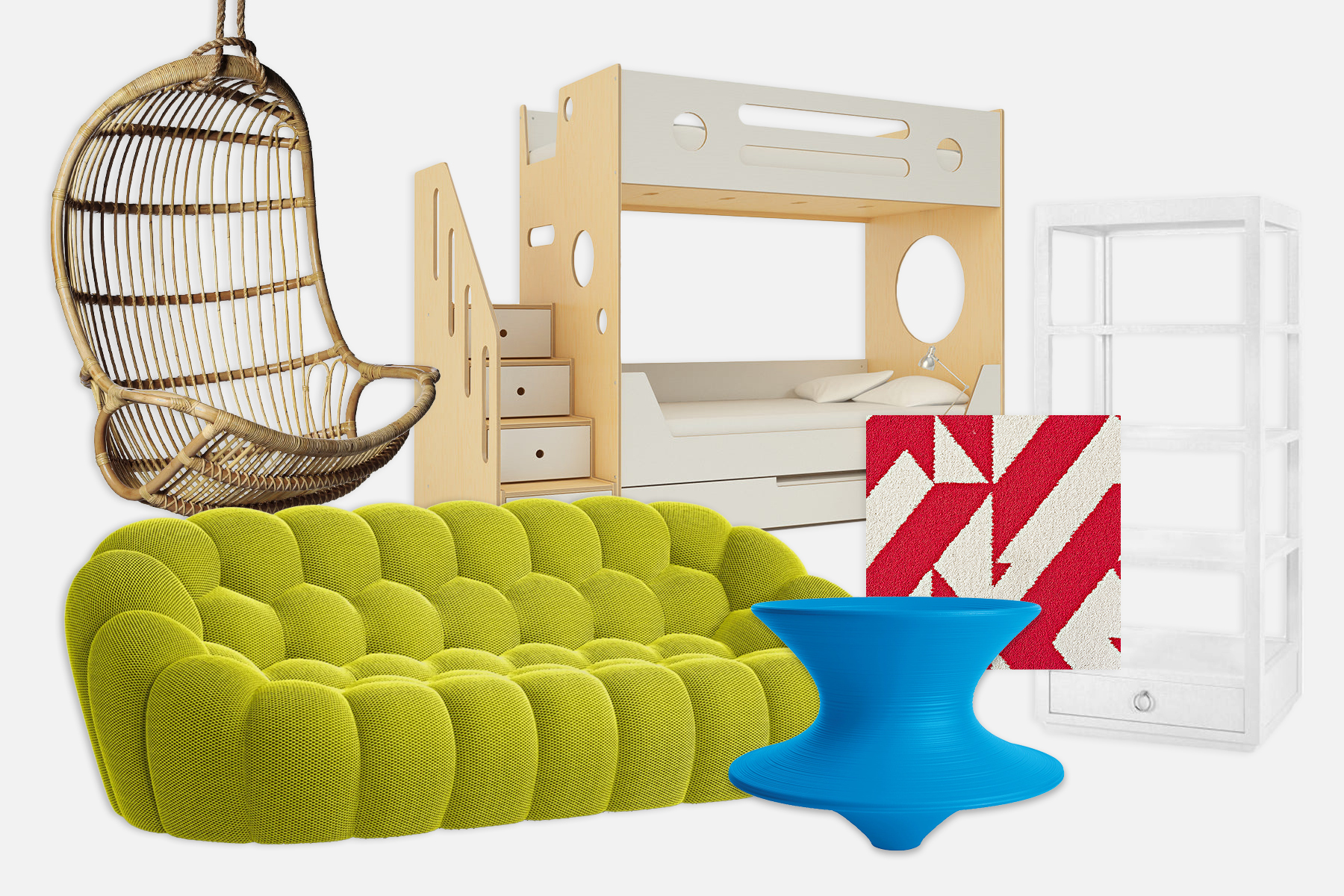Before Joachim Rønning’s film Kon-Tiki was nominated for a Golden Globe and Academy Award, before he directed the fifth Pirates of the Caribbean, even before he married the activist Amanda Hearst, the Norwegian-born director had set his sights on a very different career path. “I was in my late teens when I first came across John Lautner’s work in a coffee table book and it completely fascinated me,” Rønning says. “In fact I was so taken by his designs that before I was bitten by the movie bug, I was thinking of becoming an architect.” It would take a few more decades before Rønning and his wife would come across Lautner’s work again, but this time, it would be to buy a home the influential architect had designed.
In 1961, John Lautner designed the West Hollywood home for interior designer and concert pianist Marco Wolff. For Lautner, who had apprenticed under Frank Lloyd Wright in the 1930s, the home was an opportunity to flex his creative muscles. What began as an arduous, almost vertical plot of land, resulted in perhaps the acme of midcentury-modern residential architecture on the West Coast. With this home, Lautner leaned into the primal state of nature, demanding that his audience turn their preconceived notion of domesticity on its head. It was a bold statement of how humans once lived—among the trees, the rocks, perched atop a hill—and the architect stamped his thumbprint on it.
The four-story home is nestled within a 9,785-square-foot plot in a leafy enclave of West Hollywood. To approach it from the street is not unlike approaching the face of a rock—it’s an encounter with something that has been there before you, and it will be there after you’re long gone. Lautner had a philosophy in the construction of a home, which he termed grammar, that contributed to the whole idea of what the space was going to be. And once the architect formed this philosophy, he was relentless in its execution. “For me, as a filmmaker, I take so much inspiration from someone like Lautner,” Rønning says. “Because when I look at this house, even in the smallest of details I can see there were no compromises. He really fought for his vision.”
After moving into the home, Wolff added a guest house (also designed by Lautner) a decade later, before eventually selling the abode. What followed was a series of owners who added little in the way of elegance. That is until Rønning and Hearst Rønning purchased the property, when the stylish duo tapped architect and interior designer Clive Wilkinson to help bring their new home back to its former glory. “It’s the design of the home that’s the real star,” says Hearst Rønning, who is the cofounder of the sustainable fashion retailer Maison-De-Mode and the cofounder of Well/Beings, a non-profit dedicated to animal welfare and conservation. “So our goal was to complement Lautner’s midcentury architecture with furniture and art from the same epoch.” That meant adorning the walls with works by Robert Motherwell and Josef Albers, as well as adding congruent furniture in the form of a Harvey Probber–designed coffee table and Jorge Zalszupin–designed armchairs.
For Hearst Rønning, the great-granddaughter of publishing magnate William Randolph Hearst, moving into the 3,410-square-foot home (measurements including the guest house) marked an exciting new chapter in her life. “I grew up in New York apartments my whole life, so this was a big change for me,” she says and then laughs. Yet, for Rønning, the new home was a reminder of his roots. “Coming from Scandinavia, it’s as if I’ve had midcentury aesthetics in my blood since childhood. It was omnipresent. Not necessarily the expensive Eameses or Breuers, but nevertheless I unconsciously gained so much inspiration from that era in architecture and design.”
Rønning wasn’t the only one infatuated with the design of that era. “From the beginning, I had no desire to leave any form of signature or imprint on this house,” Wilkinson says. After receiving the proper permits from the city’s historical commission, the South African–born talent was keen on leaving the bones of the home intact. “I saw it as my job to clarify Lautner’s original design. I had no ego about it because it wasn’t about me, it was about taking a phenomenal piece of work and bringing it back to what it should be.” But that also involved bringing in L.A.–based contractor MODAA Construction to shape a few additions without disrupting the architectural integrity of the home. An extra bedroom was created (by way of an old utility room), as well as a small wine cellar and home gym.
However, out of an abundance of respect for the original design, Rønning and Hearst Rønning would not go any further in their additions. “Every day we wake up in the house, and it inspires us in a way we can’t put our finger on,” Rønning says. “It’s in the little things: How light hits the wall at certain hours, or the way we see an angle [of the wall] for the first time. It’s not unlike staring at a Rothko, for example—you’re simply absorbed by the power. It just shows the genius of Lautner.”


